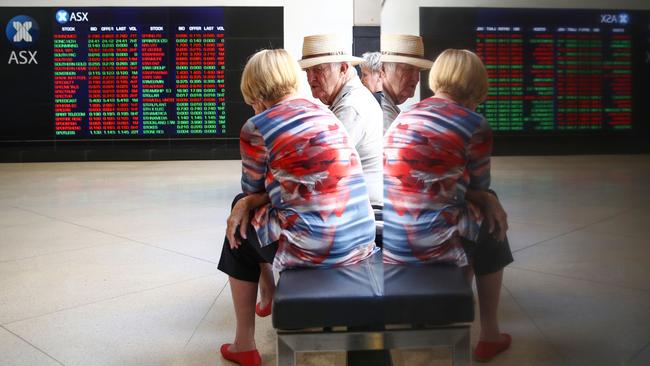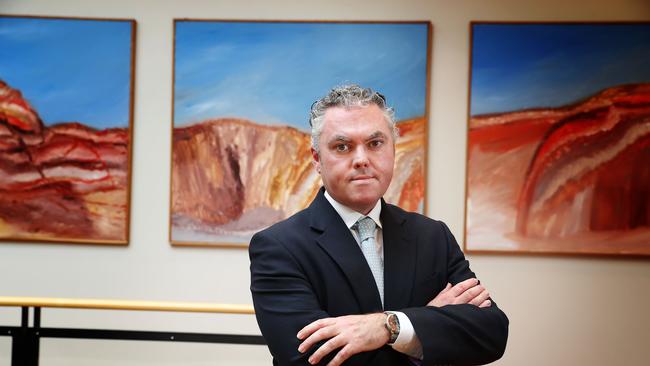Investors brace for profit downgrades as rates, China bite
Analysts will be looking for guidance on the corporate outlook as the full impact of the Reserve Bank’s rate increase begins to bite.

Investors are bracing for profit downgrades in the August reporting season, with higher interest rates hitting companies exposed to the Australian market and a slowing Chinese economy dampening sentiment for miners.
While there are expectations that reported profits for the financial year to June 30 could show some resilience, analysts will be looking for guidance on the corporate outlook as the full impact of the Reserve Bank’s rate increases starts to bite.
UBS strategist Richard Schellbach said trading updates on activity levels for the opening weeks of the 2024 financial year were “likely to look decidedly bleak”.
In a recent note to clients, he said the market’s attention in the upcoming results season would be focused on “how bad is it?”
“Attention will focus on a decelerating economy, a strained consumer and the lagged effect from the Reserve Bank’s hiking cycle which began a year ago,” Mr Schellbach said.
UBS said its internal consumer survey work showed that the sentiment in households had “flipped” from positive to negative over the past quarter.
“We expect earnings results should reflect this slowdown,” Mr Schellbach said.
While some companies have been able to maintain their pricing power, UBS is expecting that this will not be enough to prevent further earnings downgrades as top-line revenue growth slows.

Citi says its aggregate forecast earnings have been “trending down” since the last reporting season, largely on the back of lower earnings expectations for the resources sector.
“The market has been anticipating China stimulus to boost demand for commodities,” analysts Liz Dinh and Rory Anderson said in their reporting season preview.
“However, China’s macro economic data has continued to deteriorate and we are still waiting for meaningful China stimulus.”
Citi expects earnings for Australian stocks to fall by 2.1 per cent for the 2023 financial year, and decline by a more significant 4.3 per cent in the 2024 financial year.
The big drop will be in the earnings of resources companies, which it expects to decrease by 13.4 per cent in the 2023 financial year, followed by a 17.8 per cent decline in the 2024 financial year.
Citi expects bank earnings to “remain robust” with earnings growth forecast at 8.8 per cent for 2023, followed by a contraction of 3.2 per cent in the 2024 year.
But it expects other sectors of the market to hold up well, with earnings up by 9.8 per cent for FY23 and 8.1 per cent for FY24.
Last year, it notes, many companies produced results that surprised on the upside.
But its analysts are expecting a more even balance for this year’s results with the number of companies expected to surprise on the upside balanced by those expected to outperform on the flipside.

Citi analysts are expecting potential surprises on the upside in the area of media, building materials and capital goods. But they see negative surprises ahead in listed real estate investment trusts and consumer discretionary stocks.
Citi is expecting the results over the next few weeks will reveal more information about the trading conditions, including how macroeconomic factors are affecting revenues and the impact of higher cost pressures.
Higher cost pressures are expected to hit hardest in companies in infrastructure, retail, mining, healthcare, banking and car parts.
Wilson Asset Management lead portfolio manager Matthew Haupt said consumer discretionary stocks and industrials were at the greatest downside risk in the wake of the Reserve Bank’s year of monetary tightening.
“The economic environment has slowed in the last six months,” Mr Haupt said.
“The mortgage belt is now financing repayments at far higher rates than recent years, while renters have been squeezed by limited supply and surging net migration.
“As consumer spending declines, we expect revenues to disappoint more than they will surprise positively.”

But he said the fact that employment was still at record highs, employees were receiving their biggest pay rises in decades and the Reserve Bank’s rate rise cycle was nearing its end “keep us from being too bearish”.
NSW TCorp chief economist Brian Redican said he was expecting corporate results would be “quite resilient” with the impact of higher interest rates only recently started be apparent.
He said he expected the Australian economy to follow the US economy, seeing more of a slowdown later in the year.
“It’s really only been in the last six weeks or so that we’ve started to see signs that spending is beginning to slow quite rapidly,” he told the Australian.
“Around about March, April, the growth seems to have stopped.
“In the last six weeks, there’s some signs that people are pulling back,” he said. “When you get the earnings report, they’ll be reflecting what’s been happening up until the June quarter.”
Mr Redican said it would not be until the September and the December quarters when the impact of higher interest rates would be become much more apparent.



To join the conversation, please log in. Don't have an account? Register
Join the conversation, you are commenting as Logout